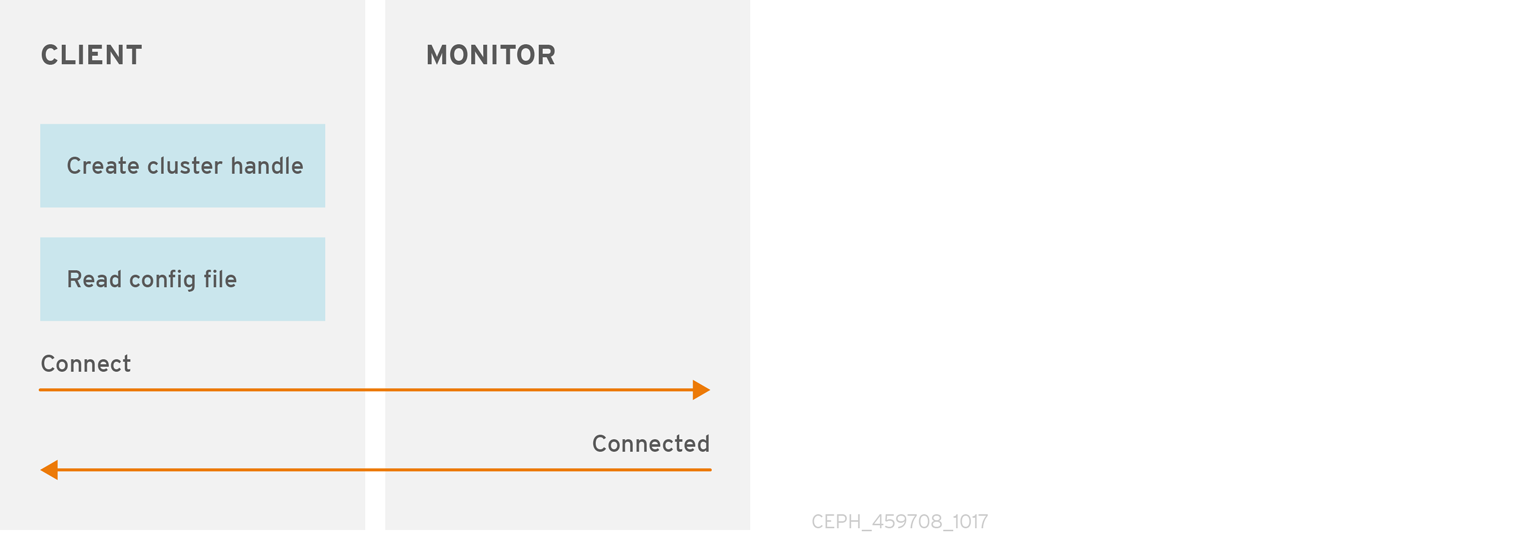Ce contenu n'est pas disponible dans la langue sélectionnée.
Chapter 2. Pools overview
Ceph clients store data in pools. When you create pools, you are creating an I/O interface for clients to store data.
From the perspective of a Ceph client, that is, block device, gateway, and the rest, interacting with the Ceph storage cluster is remarkably simple:
- Create a cluster handle.
- Connect the cluster handle to the cluster.
- Create an I/O context for reading and writing objects and their extended attributes.
Creating a cluster handle and connecting to the cluster
To connect to the Ceph storage cluster, the Ceph client needs the following details:
- The cluster name (which Ceph by default) - not using usually because it sounds ambiguous.
- An initial monitor address.
Ceph clients usually retrieve these parameters using the default path for the Ceph configuration file and then read it from the file, but a user might also specify the parameters on the command line too. The Ceph client also provides a user name and secret key, authentication is on by default. Then, the client contacts the Ceph monitor cluster and retrieves a recent copy of the cluster map, including its monitors, OSDs and pools.
Creating a pool I/O context
To read and write data, the Ceph client creates an I/O context to a specific pool in the Ceph storage cluster. If the specified user has permissions for the pool, the Ceph client can read from and write to the specified pool.
Ceph’s architecture enables the storage cluster to provide this remarkably simple interface to Ceph clients so that clients might select one of the sophisticated storage strategies you define simply by specifying a pool name and creating an I/O context. Storage strategies are invisible to the Ceph client in all but capacity and performance. Similarly, the complexities of Ceph clients, such as mapping objects into a block device representation or providing an S3/Swift RESTful service, are invisible to the Ceph storage cluster.
A pool provides you with resilience, placement groups, CRUSH rules, and quotas.
-
Resilience: You can set how many OSD are allowed to fail without losing data. For replicated pools, it is the desired number of copies or replicas of an object. A typical configuration stores an object and one additional copy, that is,
size = 2, but you can determine the number of copies or replicas. For erasure coded pools, it is the number of coding chunks, that ism=2in the erasure code profile. - Placement Groups: You can set the number of placement groups for the pool. A typical configuration uses approximately 50-100 placement groups per OSD to provide optimal balancing without using up too many computing resources. When setting up multiple pools, be careful to ensure you set a reasonable number of placement groups for both the pool and the cluster as a whole.
- CRUSH Rules: When you store data in a pool, a CRUSH rule mapped to the pool enables CRUSH to identify the rule for the placement of each object and its replicas, or chunks for erasure coded pools, in your cluster. You can create a custom CRUSH rule for your pool.
-
Quotas: When you set quotas on a pool with
ceph osd pool set-quotacommand, you might limit the maximum number of objects or the maximum number of bytes stored in the specified pool.

